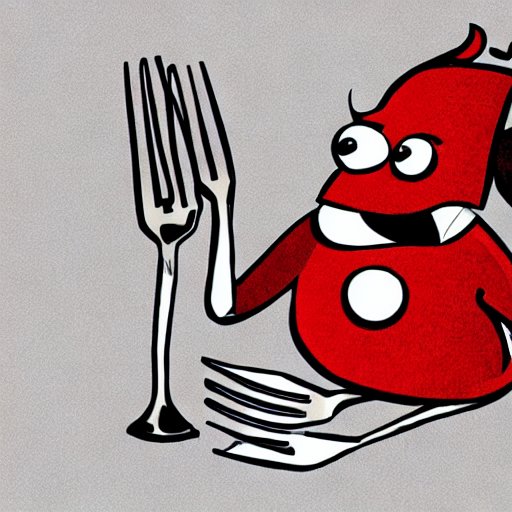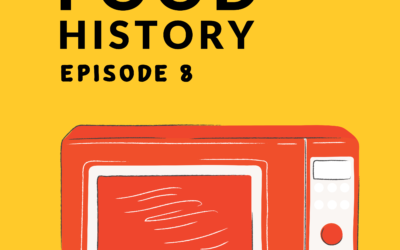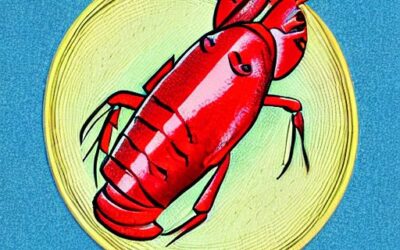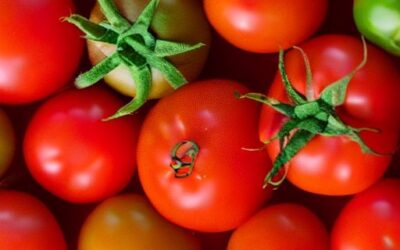The Common Devil’s Choice
I remember sitting with a group of friends on a bit of stone wall in the North of Portugal. A French girl I barely knew took out her Tupperware filled with a thick curry. With her fingers pinched, her right-hand dove into the orange goo to bring it to her mouth. The shoveling motion reminded me of an excavator that one would use at a construction site. I figured my staring, possibly with a slightly open mouth, was probably obnoxious by her third bite.
We are so used to cutlery. The moment I saw the lack of it, I realized how normal it was. It’s the classic saying: the fish doesn’t realize it’s in water, just like we don’t realize we are deeply embedded in culture.
As it turned out, the French girl spent a few years in India, where she got used to eating with her fingers and preferred that from then onwards, saying it created a better connection to the food one is eating. It even tastes better. And that’s how it was for most of human history.
Nowadays, convenience foods like burgers and sandwiches have normalized eating with our hands – but only for certain dishes. Eating a salad with your hands is messy. Eating a steak with your hands is possibly fun but barbarian and not a good impression on a first date. What is missing are some dating manners, and this little thing called a fork.
Today we will dive into the turbulent history of the youngest member of the cutlery family. While its older brother and sister – the knife and the spoon have been around for a bit longer, the fork had a tough journey. Being accused of the death of a queen, associated with prostitution, and being the star of a 1-year celebrity tour in France.
Once Upon a Tine: The Ups and Downs of Fork Adoption
The fork is a relative newcomer to the table, appearing many centuries, even millennia, after the knife and spoon. Forks were in use in ancient Egypt and Greece, and Rome. However, they weren’t used for eating but were long cooking tools used for carving or lifting meats from a pot or the fire. Most diners ate with their fingers, a knife, and a spoon. And for a long time, there was no need for a fancy extra piece of cutlery: From the Middle Ages to the early modern era, most people’s diet was straightforward. In the morning: porridge. At noon: porridge. In the evening: porridge. Nothing which could be pierced and lifted with a fork. So the fork’s short and rocky history is directly linked to the evolution of eating habits, etiquette, and table manners.
Dining forks started to appear in the noble courts of the Middle East and the Byzantine Empire in about the 7th century. They became common among wealthy families by the 10th or 11th century. Elsewhere, including in Europe, where the favored eating tools were the knife and the hand, the fork was absent.
In 1004 a Byzantine princess showed up in Venice for her marriage to a local nobleman with a case of golden forks. As she unpacked them at the wedding feast, her guests were astonished and shocked. She was condemned by the local clergy, the churchmen, for her decadence, with one going so far as to say, “God in his wisdom has provided man with natural forks—his fingers. Therefore it is an insult to him to substitute artificial metal forks for them when eating.”
When the princess died of the plague two years later, Saint Peter Damian suggested that it was God’s punishment: “. . . . this woman’s vanity was hateful to Almighty God; and so, unmistakably, did He take his revenge.”
After this unlucky debut, forks were understandably slow to catch on. The fork was commonly viewed with skepticism or even outright hostility. As we have seen in the stories on potatoes and tomatoes, associations play a crucial role. The fork’s similarity to a devil’s pitchfork turned out to be a significant image problem.
But slowly, Italian noblemen began to notice the advantages. By the late Middle Ages, forks were used to eat candied fruits in syrup or foods likely to stain fingers.
But a specific group of people was primarily known for doing that. And this is where we see the impact of anti-influencers. Eating sweets with a fork was common among prostitutes, causing the Church to ban forks as immoral. Another stepback.
Towards the 1500s, another royal tried her luck to make forks popular. Catherine de Medici arrived from Italy to marry the future King Henry II, bringing several dozen silver forks with her. Catherine used massive public festivals to demonstrate the monarchy’s power, and food was part of this strategy.
So just like a modern-day pop star, Catherine toured France for more than a year in the 1560s. But instead of showcasing her second-class songwriting, she showcased her eating methods and took her forks with her.
And that was the breakthrough. The use of forks spread to wealthy French families eager to adopt the new Italian vogue.
Further North, the opposition initially remained strong. Martin Luther and Erasmus of Rotterdam ridiculed the fork as feminine fashion. “God keeps me from forks,” Luther exclaimed. Until that time, the fork had the image of being unmanly and ungodly, probably something that goes hand in hand. That reminds me of how tires on bikes were disliked because of being safer, therefore less adventurous, and more feminine. And how marketing bikes for women as a way to get around independently backfired. But I am going on a tangent here.
Over time, even in the North, a critical advantage of the fork became clear: hygiene.
Thomas Coryate, an Englishman who traveled extensively through France and Italy in 1608, noted the habit of using a fork: “The reason of this their curiosity, is because the Italian cannot by any means endure to have his dish touched with fingers, seeing all men’s fingers are not alike cleane. Hereupon I myselfe thought good to imitate the Italian fashion by this forked cutting of meate,…”.
While the fork became popular earlier in France, in northern Europe, it took until the 18th century: The once despised tool became a symbol of luxury and sophistication in aristocratic circles. At the same time, behavior at the table became increasingly important. People paid more attention to good manners.
Around the beginning of the 18th century, Louis XIV still forbade his children to eat with the forks that their tutor had encouraged them to use. But by the middle of the century, the use of the fork had become so routine that only people who misused forks were made fun of. Women and men alike were now embarrassed to get their fingers dirty while eating in noble families.
As the fork grew in popularity, it also changed form. The straight, two-pronged division was fine for spearing foods but not well adapted to scooping. A third, and sometimes fourth, tine made food less likely to slip through, and adding a slight curve to the tines made it an even more efficient scoop. By the beginning of the 19th century, the fork was firmly established on the French table. Eating habits had become so refined in the upper classes that when taking a seat at a Victorian dining table, you had to be able to tell your pickle fork from a fish fork, a pastry fork, or an oyster fork, just to mention a few.
After this summit of fork love and the rise of casual dining in our times, we have limited ourselves mainly to the use of a simple one-for-all fork and the occasional dessert fork. Convenience foods and drive-throughs even mean that for the first time since the 1500s, we regularly eat complete meals with our hands from time to time. But using a fork and knife is the gold standard, and it is no exaggeration to say that this piece of cutlery changed the way we eat forever.
What the Spork: New Inventions in Dining Cutlery
But wait, was this the end of the evolution of eating instruments? Not quite! Some clever people wondered how they could save money on their cutlery and make it lighter to carry along when traveling. This was the birth of the infamous spork, a hybrid of spoon and fork in one instrument. As early as 1847, a doctor named Samuel W. Francis filed a patent for a spork-like utensil in the U.S. (he also invented a toothbrush with rubber bristles and a cane with a hidden compartment for bus fares). The patent featured a spoon with tines sticking out the front end and a blade tacked onto one side. Ouch! Other inventors followed, concentrating only on combining spoon and fork. But although the spork was invented several times over by different people who all thought it was a great idea, it somehow never really caught on as an everyday eating tool: The tines are not long enough to poke through most foods, and it cannot scoop as well as a spoon. You could call the spork a product that wants too much and fails at everything. Still, it has its right to exist and can come in quite handy in more informal eating situations when there is no table available, and the plate must be held in one hand, leaving only one for eating. That makes them extremely popular with campers and backpackers, for example. (Apparently, plastic sporks are also quite common in U.S. prisons because they are difficult to shape into knife-like weapons).
And the evolution of eating tools doesn’t even end there. Have you ever heard of the more recent innovations of the “spife” or the “knork”? I’ll leave it to your imagination what they could look like.
Lessons to be learned
Like most new and unknown things connected with food, the fork was ridiculed and met with rejection first. But its eventual triumph was closely connected to changing attitudes about big subjects in society, including religion and masculinity. When the Catholic Church slowly started to lose its influence on people’s minds, the fork was no longer doomed as vain and immoral. And when refined eating habits developed around the European courts, men stopped seeing the fork as a tool only for females.
It helps to keep a lookout on the macro trends and the significant changes in perception that can help food or technology catch on. We see a trend toward short, clean labels, with less questionable ingredients in the food industry. There is a slight trend towards veganism, increasing flexitarianism—a growing concern for sustainability and choosing greener options.
The history of the fork (as the history of the potato and the tomato) shows again that the impact of influencers on the spreading and success of a new food product should not be underestimated. Using a fork only became widespread when aristocrats adopted this new eating habit as the influencers of their time.
So I hope that the next time you eat out with a friend or, who knows, even a date, you will look at this curved, tiny pitchfork with some curiosity and awe, seeing that what is in your hand has gone through many centuries of up and downs to become your regular. And that you would be eating the same thing possible with a completely different device – for example, with chopsticks or hands in a different time of history, or even just in a different country on earth.
Sources:
Coffin, S.D., Lupton, E., Goldstein, D., Bloemink, B. (2006): Feeding Desire: Design and the Tools of the Table, 1500-2005. Assouline Publishing, 01.05.2006
Edward, P. (2015): The eccentric, heroic life of Samuel W. Francis, inventor of the spork. Vox Media, 23.06.2015
https://www.vox.com/2015/6/23/8826591/spork-inventor
Filser, H. (2016): Das Tischgerät des Teufels. Süddeutsche Zeitung, 05.09.2016.
Goldsmith, S. (2012): The Rise of the Fork. Slate, 20.06.2012
Gross, J. (2013): Who made that spork? The New York Time Magazine, 29.11.2013
Ward, C. (2009): Origins of the common fork. Leite’s Culinaria, 06.05.2009.








